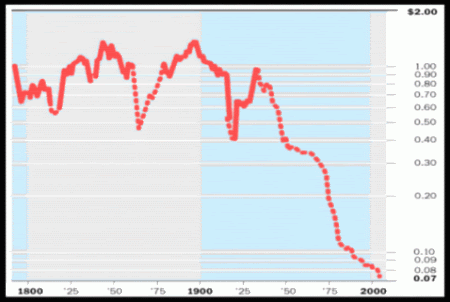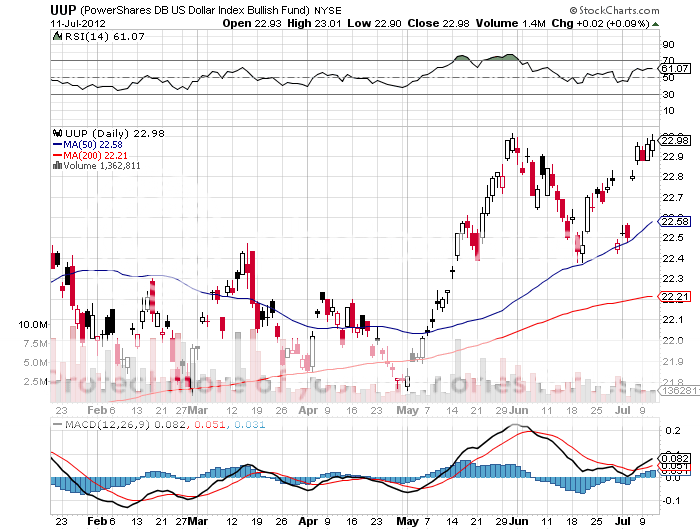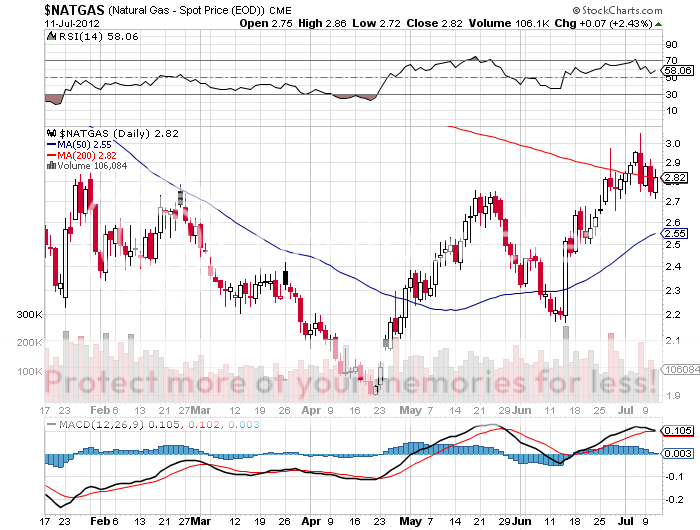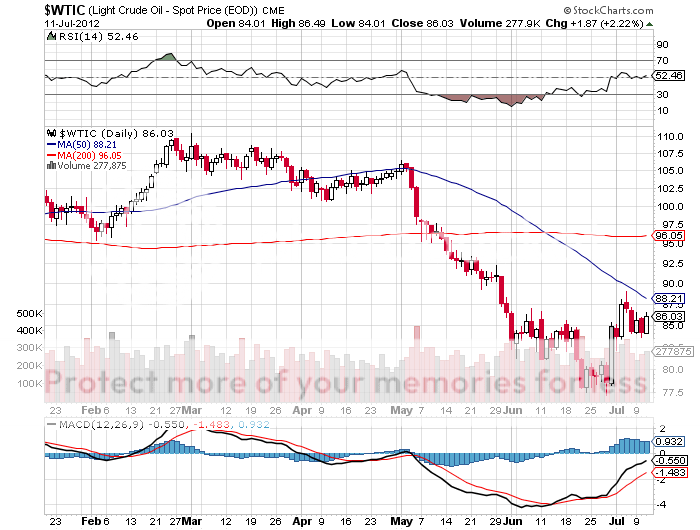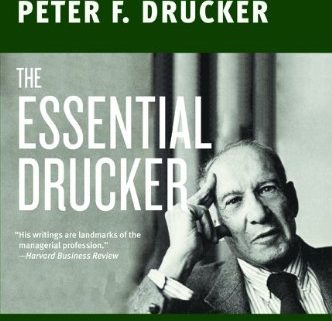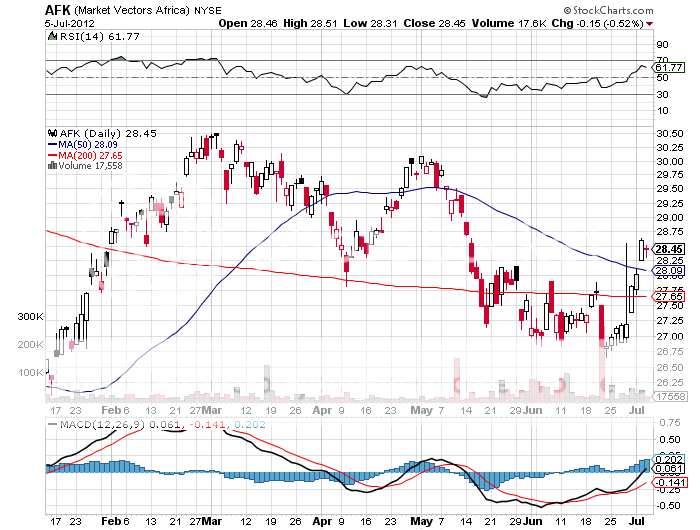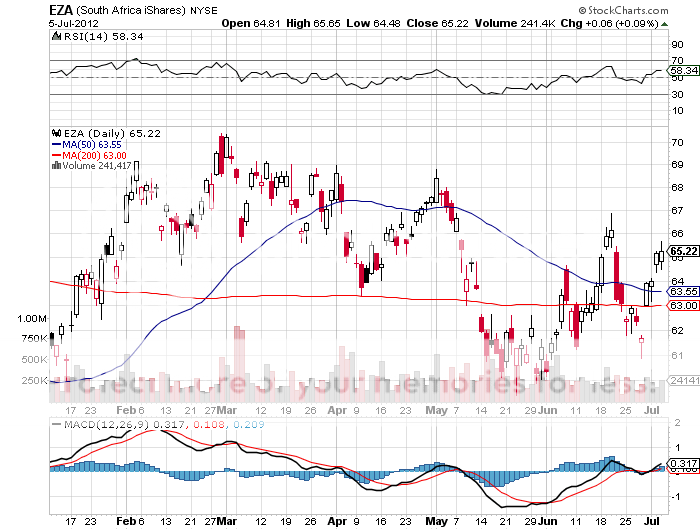?Take 200 round trips to Australia, and you really start to rack up the miles,? said Tom Stoker, and automotive sales analyst who just surpassed 10 million frequent flier points on United Airlines. It makes my own 1 million miles seem puny by comparison.
First there was your grade point average, then your SAT score, followed by GMAT and LSAT scores, and finally your FICO. Now there is a new metric with which you will be judged, your ?Influencer? score.
A new breed of marketing research firms are using data from social media sites, like Facebook, Linkedin, and Twitter, to rank members according to their ability to spur their friends to action. Companies like Klout, Peer Index, and Twitter Grader are using complex algorithms to mine their data and rank members. This is far more than just a simple listing of ?friends.?
Scores range from 1-100, with a major league socializer achieving a 40 ranking, and someone like Bono or Martha Steward coming in at a godlike 100. These scores will be made public and could have a major impact on you career prospects, your credit rating, and even your sex life. I can hear this conversation coming already: ?Thanks for the invitation to the opera, honey, but I have a better offer from an 80 to go to the Giants game.?
Do you like your new BMW, American Express card, or Rolex watch and are talking about it with your friends? Advertisers are willing to pay big bucks to get to know you. Last year, Virgin America airline offered free tickets to Los Angeles and San Francisco to highly ranked influencers, while Audi made available special discounts for a new car. Las Vegas casinos are giving away weekends with complimentary show tickets and generous room service tabs.
I have to tell you that I am looking forward to the new system. I just passed 1,200 likes on Facebook and have a massive Twitter following. My website gets 30,000 hits a day and is read in 125 countries, so I should score pretty highly.? I understand that Maria Shriver has recently become available. Hey, Maria! Want to check out my 90? I?ll even fire my cleaning lady!
Will a 90 Tickle Your Fancy?
During my college days, one of my math professors used to repeat a truism: ?Statistics are like a bikini; what they reveal are fascinating, but what they conceal is essential.? That has increasingly becoming the case with US economic data, which are leading investors astray with their faulty guidance.
It turns out that most government data releases contain a seasonal adjustment factor that includes a five-year look back. The problem arises when the 2008 figures from the global financial meltdown are averaged in, which includes a panoply of once in a century spikes. Think job losses at 700,000 a month and a shrinking GDP at an annualized -9% rate.
Those data points are skewing today?s releases in unfortunate ways. They are making the economy appear stronger from September to February, and weaker than it should be from March to August. What this does is reinforce an existing historical trend that weakens stocks every spring, only to rally them back in the fall, which has been in force for over 100 years.
My theory is that this dates back to the agricultural foundations of our nation. Farmers were always at maximum distress during the late summer when their borrowing to pay for seed, fertilizer, and labor was at a maximum, just before the harvest. This is why stock market crashes always happen in September and October.
In recent years, bailouts from the Federal Reserve have reinforced the two red herrings above. Being human, they react to four or five months of unrelenting market stress crying ?Uncle? just when the kids are headed back to school. In August 2010 Bernanke sprung QE2 on the market, and in September 2011 he launched his ?twist? policy, or ?QE light?. In both cases these actions led to 6-8 month global rallies in all risk assets.
What all of this does is explain why ?sell in May and go away? has worked so well for the past four years. Using the five-year timetable, it looks like we will see a repeat of this seasonality in 2013. After that, when everyone comes to believe that the trend is a certainty, it will fail. May bears will get run over by a stampede of bulls in 2014 as the statistical aberrations fade away. It will be then that the shortcomings of a bikini become most apparent.
Conceals More Than It Reveals
Location: 48 degrees, 02.12 minutes North, 043 degrees, 42.08 minutes East, or 1,421 nautical miles ENE of New York.
The Queen Mary 2 is currently plowing its way through a massive fog bank a thousand miles thick, sounding the foghorn every two minutes. Visibility is less than 100 yards, and the waves are a rough 12 feet high. The captain has closed the outside decks for fear of losing a passenger overboard. The weather has disrupted our satellite link, and our Internet is down. So here I write.
One hour out of New York, and a passenger suffered a heart attack. So the captain turned the ship around and headed back to the harbor, where the New Jersey search and rescue sent out a launch to pick up the unfortunate man and his spouse. That meant we could pass under the Verrazano Bridge three times, on each occasion deftly clearing the span by a mere ten feet. Talk about inauspicious beginnings.
The ship is truly gigantic. You must allow 20 minutes to get anywhere, 5 minutes to walk there and 15 minutes to get lost. When launched a decade ago, it was the largest cruise ship every built at 148,900 tons, nearly double the size of the now decommissioned Queen Elizabeth II. It whisks up to 3,000 passengers and 1,325 crew across the seas in the utmost luxury at a steady 21.5 knots. You could water ski behind this leviathan of a vessel, if only the crew permitted it.
As a 40 year guest of Cunard and the highest paying customer on the ship, I managed to bag the Sandringham Suite, possible the most luxurious publicly available oceangoing accommodation ever created. The 2,200 square foot, two floor, two bedroom, three bathroom, Q1 class apartment on decks nine and ten includes a formal dining room, kitchen, his and her closets, a small gym, and 1,000 square feet of rear facing teak deck.
All of this was a bargain for $56,000, or about the same as renting the presidential suite at the San Francisco Ritz for a week at $10,000 a night, except at the end you wake up in England five pounds heavier. Not that I noticed, though. By the afternoon, the two complimentary bottles of Dom Perignon Champagne were already headed for the recycling bin.
The suite came staffed with two full time butlers, Peter and Henry, who were an endless font of fascinating information about the ship. During one unfortunate cruise, eight senior citizens passed away. The morgue held only six, so the extra two were stashed in the meat locker for the duration of the voyage.
I asked if the Cunard they ever performed burials at sea in these circumstances. They said they used to. But a few years back an elderly billionaire ?Mr. Smith? checked into a deluxe Q1 cabin with a hot young ?Mrs. Smith?, and then promptly expired. The grieving widow requested he be buried mid-Atlantic with the traditional yard of sail and a cannonball. When the ship docked at Southampton, the much older real ?Mrs. Smith? appeared to claim the body, and sued the company when informed of his current disposition. So, no more burials at sea.
Yes, the ship did hit a whale once, which stuck to the bulbous bow. When it landed in Portugal, Cunard was fined for commercial fishing without a license. The unlucky cetacean?s skeleton is now in a Lisbon maritime museum. Apparently this company gets sued a lot.
Of course, the memory of the sinking of the Titanic is ever present. There is a history display down on deck 2 and you can even have your photo taken in front of a backdrop of the grand staircase of the ill fated ship. When we passed 10,000 feet over the wreck at 48 degrees, 38.50 minutes North, 50 degrees, 00.11 minutes West one day out of New York, the Queen Mary 2 let out three long blasts of its horn in memory of the lost. Cunard took over the Titanic?s White Star Line during the Great Depression and is therefore the inheritor of this legacy.
Peter is now at the door with my dinner, so I will continue on another post.
A number of analysts, and even some of those in the real estate industry, are finally coming around to the depressing conclusion that there will never be a recovery in residential real estate. Long time readers of this letter know too well that I have been hugely negative on the sector since late 2005, when I unloaded all of my holdings (click here for ?The Hard Truth About Residential Real Estate?). However, I believe that ?forever? may be on the extreme side. Personally, I believe there will be great opportunities in real estate starting in 2030.
Let?s back up for a second and review where the great bull market of 1950-2007 came from. That?s when a mere 50 million members of the ?greatest generation?, those born from 1920 to 1945, were chased by 80 million baby boomers born from 1946-1962. There was a chronic shortage of housing, with the extra 30 million never hesitating to borrow more to pay higher prices. When my parents got married in 1948, they were only able to land a dingy apartment in a crummy Los Angeles neighborhood because he was an ex-Marine. This is where our suburbs came from.
Since 2005, the tables have turned. There are now 80 million baby boomers attempting to unload dwellings on 65 million generation Xer?s who earn less than their parents, marking down prices as fast as they can. As a result, the Federal Reserve thinks that 50% of American homeowners either have negative equity, or less than 10% equity, which amounts to nearly zero after you take out sales commissions and closing costs. That comes to 70 million homes. Don?t count on selling your house to your kids, especially if they are still living rent free in the basement.
The good news is that the next bull market in housing starts in 20 years. That?s when 85 million millennials, those born from 1988 to yesterday, start competing to buy homes from only 65 million gen Xer?s. By then, house prices will be a lot cheaper than they are today in real terms. The ongoing melt down in residential real estate will probably knock another 25% off real estate prices. Think 1982 again. Fannie Mae and Freddie Mac will be long gone, meaning that the 30 year conventional mortgage will cease to exist. All future home purchases will be financed with adjustable rate mortgages, forcing homebuyers to assume interest rate risk, as they already do in most of the developed world. With the US budget deficit problems persisting beyond the horizon, the home mortgage interest deduction is an endangered species, and its demise will chop another 10% off home values.
For you millennials just graduating from college now, this is a best case scenario. It gives you 15 years to save up the substantial down payment banks will require by then. You can then swoop in to cherry pick the best neighborhoods at the bottom of a 25 year bear market. People will no doubt tell you that you are crazy, that renting is the only safe thing to do, and that home ownership is for suckers. That?s what people told me when I bought my first New York coop in 1982 at one tenth its current market price. Just remember to sell by 2060, because that?s when the next intergenerational residential real estate collapse is expected to ensue. That will leave the next, yet to be named generation, holding the bag, as your grandparents are now.
Another great American Icon is falling victim to the collapse of the country?s manufacturing industry. Shanghai Zhenhua Heavy Industries has completed construction of the last of four steel modules for the new Oakland Bay Bridge. The pieces of this giant erector set, which weigh 5,300 tons together, will shortly begin the arduous 22 day journey across the Pacific, baring weather delays.
These are the last of 43,000 tons of Chinese heavy engineering handiwork that will be used to rebuild the aging structure, which was damaged in the 1989 Loma Prieta earthquake. Caltrans authorities have been holding their breath ever since, with potholes occasionally opening up to the bay 100 feet below, cables snapping to behead unfortunate rush hour commuters, and trucks breaking through a treacherous ?S? curve to crash land below.
Zhenhua won the contract with a rock bottom $250 million bid, which is not much more than the cost of the steel itself. The company had to agree to train 1,000 welders to US union standards to get the job. An all American bid would have come in at several times this figure. When the 525 foot tall tower is completed, it will become the world?s largest single span suspension bridge.
The only catch is that if repairs are required on site, the operating manual is written in Mandarin. Will the last person to leave US based manufacturing please turn out the lights? At least many of the tourists photographing the new bridge will be visiting from the Middle Kingdom and paying for it with their vacation dollars.
Small consolation if you are an American worker waiting for his next food stamp hand out.
Any trader will tell you the trend is your friend, and the overwhelming direction for the US dollar for the last 220 years has been down.
Our first Treasury Secretary, Alexander Hamilton, found himself constantly embroiled in sex scandals. Take a ten dollar bill out of your wallet and you?re looking at a world class horn dog, a swordsman of the first order. When he wasn?t fighting scandalous accusations in the press and the courts, he spent much of his six years in office orchestrating a rescue of our new currency, the US dollar.
Winning the Revolutionary War bankrupted the young United States, draining it of resources and leaving it with huge debts. Hamilton settled many of these by giving creditors notes exchangeable for then worthless Indian land west of the Appalachians. As soon as the ink was dry on these promissory notes, they traded in the secondary market for as low as 25% of face value, beginning a centuries long government tradition of stiffing its lenders, a practice that continues to this day. My unfortunate ancestors took him up on his offer, the end result being that I am now writing this letter to you from California?and am part Indian.
It all ended in tears for Hamilton, who, misjudging former Vice President Aaron Burr?s intentions in a New Jersey duel, ended up with a bullet in his back that severed his spinal cord. Cheney, eat your heart out.
Since Bloomberg machines weren?t around in 1790, we have to rely on alternative valuation measures for the dollar then, like purchasing power parity, and the value of goods priced in gold. A chart of this data shows an undeniable permanent downtrend, which greatly accelerates after 1933 when FDR banned private ownership of gold and devalued the dollar.
Today, going short the currency of the world?s largest borrower, running the greatest trade and current account deficits in history, with a diminishing long term growth rate is a no brainer. But once it became every hedge fund trader?s free lunch, and positions became so lopsided against the buck, a reversal was inevitable. We seem to be solidly in one of those periodic corrections, which began six month ago, and could continue for months or years.
The euro has its own particular problems, with the cost of a generous social safety net sending EC budget deficits careening. Use this strength in the greenback to scale into core long positions in the currencies of countries that are major commodity exporters, boast rising trade and current account surpluses, and possess small consuming populations. I?m talking about the Canadian dollar (FXC), the Australian dollar (FXA), and the New Zealand dollar (BNZ), all of which will eventually hit parity with the greenback. Think of these as emerging markets where they speak English, best played through the local currencies.
For a sleeper, buy the Chinese Yuan ETF (CYB) for your back book. A major revaluation by the Middle Kingdom is just a matter of time.
I?m sure that if Alexander Hamilton were alive today, he would counsel our modern Treasury Secretary, Tim Geithner, to talk the dollar up, but to do everything he could to undermine the buck behind the scenes, thus over time depreciating our national debt down to nothing through a stealth devaluation. Given Geithner?s performance so far, I?d say he studied his history well. Hamilton must be smiling from the grave.
I recently spent an evening with Ambassador Richard Jones, the Deputy Executive Director of the International Energy Agency in Paris, who had some eye opening things to say about the energy space. The IEA was first set up as a counterweight to OPEC during the oil crisis in 1974, and has since evolved into a top drawer energy research organization.
World GDP will grow an average 3.1%/year through 2030, driving oil demand from the current 84 million barrels/day to 103 million b/d. That means we will have to find the equivalent of six Saudi Arabias to fill the gap or prices are going up, possibly a lot. His conservative target has crude at $190 in twenty years. Some 39% of that increase in demand will come from China and 15% from India.
A collapse in investment caused by the financial crisis means that supply can?t recover in time to avoid another price spike. More than 1.5 billion people today don?t have electricity at all, but would love to have it. The best the climate negotiations can hope for is for CO2 to rise until 2020, and then plateau after that, because once this greenhouse gas enters the atmosphere it is very hard to get out.
This will require a massive decarbonization effort reliant on nuclear, hydro, alternatives, and carbon capture and storage. Up to half of the needed carbon reduction can be achieved through simple efficiency measures, like ditching the incandescent light bulb, driving more hybrids, and closing dirty, old coal fired power plants. Natural gas will be a vital bridge, as it is cheap, in abundant supply, and emits only half the carbon of traditional fossil fuels. The total 20 year bill for the rebuilding of our new energy infrastructure will exceed $10 trillion.
Richard, who comes from a long diplomatic career in Kuwait, Kazakhstan, and Israel, certainly didn?t pull any punches. I have been a huge fan of the IEA?s data for 35 years. Better use any weakness in oil prices to accumulate long term positions in crude through the futures, the ETF (USO), the offshore drilling companies like Transocean (RIG), and oil and gas plays like XOM, and OXY. When oil comes back, it will do so with a vengeance.
I?ll Take Another Six Please
If you have been living in a cave for the last 72 years and missed the work of management guru, Peter F. Drucker, here is your chance to catch up. I just finished reading The Essential Drucker, a weighty tome of 368 pages which summarized the high points and pearls of wisdom of the author's 38 books published since 1939.
A self-described 'social ecologist', Drucker was a journalist who moved to Germany because job prospects in his native Austria-Hungary were so poor following its defeat in WWI. He became a close friend of Austrian economist Joseph Schumpeter, who popularized the term 'creative destruction,' and attended lectures by John Maynard Keynes. He fled to the US in 1934 after his writings were burned by the Nazis.
For most of human history, armies were the predominant management model, and most corporations today show the military influence. Management only emerged as a science during the 1920's, and Drucker was one of the founding fathers. Early adopters, like Coca Cola, Du Pont, IBM, and General Electric, went on to prosper mightily.
He observed that Franklin Delano Roosevelt set up the most productive administration in history. Taking even a single step was so painful for him that he, and all those who worked around him, had to organize the government with the maximum efficiency possible. This was a key element in America's victory in WWII.
Drucker writes at length on the risks and opportunities of entrepreneurship, and argues that all companies must innovate, or die, no matter how pedestrian their product. He predicted many of the trends that came to dominate the late 20th and early 21st century, such as privatization, decentralization, globalization, and the rise of the knowledge worker. He had a huge following when I was in Japan during the seventies, and his mark can be seen in today's global presence of the major Japanese keiretsu.
While most define a company in terms of producing products and making a profit, Drucker sees its mission as 'creating a customer.' He presents a rigorous process for decision making. He lauds nonprofits as the best run organizations in the country because they have to be. Groups like the Girl Scouts, the Red Cross, and United Way maintain an effective global presence without paying their people any money. He makes the distinction between efficiency and effectiveness; doing things well, versus doing the right thing.
Anyone who manages any business of whatever size, from a Fortune 500 company to a single individual banging away on a PC at home, will benefit from reading this book. It forces you to take a look at your own operation with a fresh set of eyes. It even advises on how to manage one's own time, from dispensing with unnecessary meetings to minimizing paperwork and bureaucracy.
Drucker moved to California during the seventies, where he set up one of the early MBA programs for Claremont College. He died in 2005 at the age of 96. To obtain preferential pricing from Amazon for this insightful book, please click here.
Feel Like Investing in a State Sponsor of Terrorism? How about a country whose leaders have stolen $400 billion in the last decade and have seen 300 foreign workers kidnapped? Another country lost four wars in the last 40 years. Still interested? How about a country that suffers one of the world?s highest AIDs rates, endures regular insurrections where all of the Westerners get massacred, and racked up 5 million dead in a continuous civil war?
Then, Africa is the place for you, the world?s largest source of gold, diamonds, chocolate, and cobalt! The countries above are Nigeria, Egypt, and the Congo. Below the radar of the investment community since the colonial days, the Dark Continent has recently been attracting the attention of large hedge funds and private equity firms.
Goldman Sachs has set up Emerging Capital Partners, which has already invested $2 billion there. China sees the writing on the wall, and has launched a latter day colonization effort, taking a 20% equity stake in South Africa?s Standard Bank, the largest on the continent. There are now thought to be over one million Chinese agricultural workers in Africa.
In fact, foreign direct investment last year jumped from $53 billion to $61 billion, while cross border M & A leapt from $10.2 billion to $26.3 billion. The angle here is that all of the terrible headlines above are in the price, that prices are very low, and the perceived risk is much greater than actual risk.
Price earnings multiples are low single digits, cash flows are huge, and returns of capital within two years are not unheard of. These numbers remind me of those found in Japan during the fifties, right after it lost WWII.
The reality is that Africa?s 900 million have unlimited demand for almost everything, and there is scant supply, with many firms enjoying local monopolies. The big plays are your classic early emerging market targets, like banking, telecommunications, electric power, and other infrastructure.
For example, in the last decade, the number of telephones has soared from 350,000 to 10 million. It?s like the early days of investing in China in the seventies, when the adventurous only played when they could double their money in two years, because the risks were so high.
This is definitely not for day traders. If you are willing to give up a lot of short term liquidity for a high long term return, then look at the Market Vectors Africa Index ETF (AFK), which has 29% of its holdings in South Africa and 20% in Nigeria. There is also the SPDR S&P Emerging Middle East & Africa ETF (GAF). For more of a rifle shot, entertain the iShares MSCI South Africa Index Fund (EZA).
Meet Your New Partner
Legal Disclaimer
There is a very high degree of risk involved in trading. Past results are not indicative of future returns. MadHedgeFundTrader.com and all individuals affiliated with this site assume no responsibilities for your trading and investment results. The indicators, strategies, columns, articles and all other features are for educational purposes only and should not be construed as investment advice. Information for futures trading observations are obtained from sources believed to be reliable, but we do not warrant its completeness or accuracy, or warrant any results from the use of the information. Your use of the trading observations is entirely at your own risk and it is your sole responsibility to evaluate the accuracy, completeness and usefulness of the information. You must assess the risk of any trade with your broker and make your own independent decisions regarding any securities mentioned herein. Affiliates of MadHedgeFundTrader.com may have a position or effect transactions in the securities described herein (or options thereon) and/or otherwise employ trading strategies that may be consistent or inconsistent with the provided strategies.















